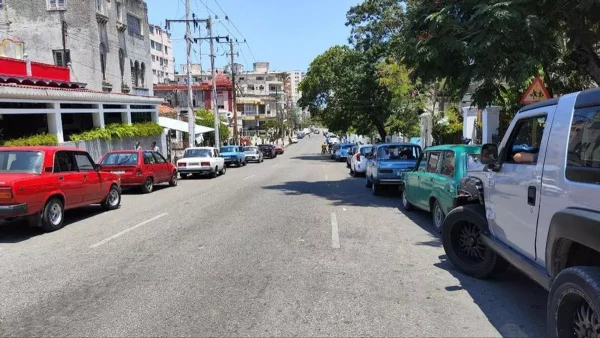of late without Russian oil and less Venezuelan oil

Vehicles in Havana once again occupy more than five blocks, an image that had not been seen for several months.
By Juan Diego Rodríguez (14ymedio)
HAVANA TIMES – For the past three days, lines have returned to the gas stations of Havana, where vehicles once again occupy more than five blocks, an image that had not been seen for months.
This Thursday, at two of the normally busiest stations in El Vedado, 25th and G and 17th and L, the scene was similar. The lengthy line at 25th and G was, according to the driver of an old car, “like in the old days”: it went down G, turned onto 23rd, and then continued along F for quite a few blocks. At 17th and L, the line had to be distributed between on both sides of the street.
El Tangana, another service station that is usually well-stocked, was also bustling with customers waiting. It was in vain, however, as there was no fuel in the morning hours.
In Centro Habana, at the gas station at Infanta and San Rafael, cars were also divided into two parts: one on San Rafael going up, nearly reaching the Calixto García hospital, and the other on Infanta turning onto Zanja street.
The consequence is not only seen in the lines or the lack of transportation. Due to the shortage, another day of energy deficit is expected. Up to 30% of the island, says the Cuban Electric Union, will experience blackouts during peak demand hours.
The situation was foreseeable since early this month when Reuters’ monthly report on Venezuelan oil exports was released.
Although the British news agency does not reveal the exact amount Caracas sends to Havana, based on ship monitoring, University of Texas researcher Jorge Piñon estimates that the island received a total load of about 840,000 barrels of oil in three tankers. This amounts to 28,000 barrels per day (bpd), a significant drop from the previous year’s monthly average of 57,000 bpd.
According to Reuters, Venezuela’s exports in April fell by 38% compared to March—which had already seen a sharp decline—following the partial re-establishment of Washington’s sanctions on Nicolas Maduro’s regime.
For months, this newspaper has been monitoring the movement of the María Cristina, Petion, and Alicia, the three ships that also arrived in April, whose routes between Venezuelan and Cuban port terminals are constant. Regarding another known ship, the Eco Fleet —which in mid-April, after spending weeks in Cuban territorial waters without unloading the 40,000 tons of diesel it was carrying from Tunisia, left for Jamaica— Piñón told 14ymedio in early May that it was back off the coast of the island, near the Cuban capital.
In April, Piñón’s team of researchers did not detect any Russian ships entering Cuban ports, which may explain the current fuel shortage. Donations from not only Venezuela and Russia but also Mexico are clearly insufficient to help the island out of its nearly permanent energy crisis.
Read more from Cuba here on Havana Times.